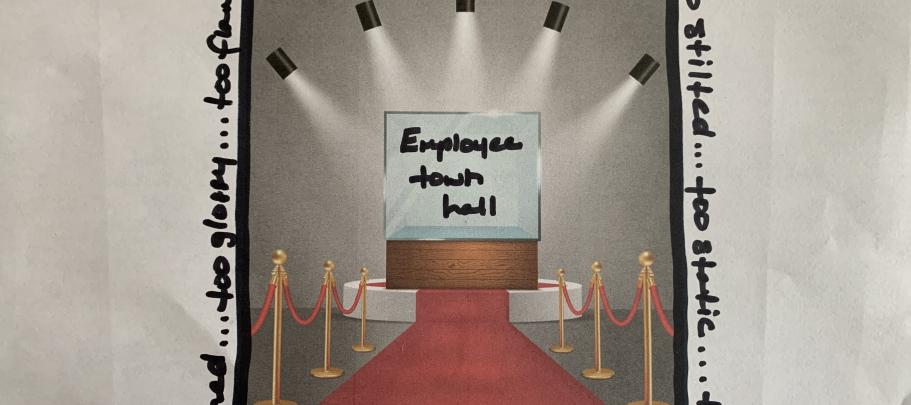
If you’ve read my book, you know that I believe a successful town hall requires planning. You need to set objectives, build an agenda, develop a detailed run of show and rehearse transitions, polls and technology.
So you may be surprised to learn that I also believe that town halls should not be perfect. The purpose of a town hall is to give leaders and employees the opportunity to connect with one another. Your objective is to build credibility and trust and to foster relationships.
None of that can be accomplished when every moment is scripted. The more polished the event, the less employees feel that they’re part of an authentic experience.
That means:
- A pre-recorded town hall is not a town hall at all—it’s a long, boring video. I was dismayed to learn recently that not one, but two companies were doing recorded town halls because leaders didn’t want any mistakes. I’d choose the risk of a few glitches over a stilted, one-way talking-head experience any day. (Guess what: so would employees.)
- Along the same lines, use video very sparingly. Even in a virtual town hall, you create energy when everyone is in the “same room” together in real time. A video breaks the bond. So the video has to be very good (and very short) to be worth showing.
- What employees remember most about town halls are Q&As, dialogue sessions, polls and other interactive sessions. Yes, I know your leaders want to present the strategy, but employees are going to learn more effectively if you facilitate a participative discussion about the topic.
- Things are going to go wrong. So have a Plan B you can put into effect when the poll doesn’t work or the video doesn’t play or the slides don’t advance or the executive VP loses her internet connection. My favorite: Ask employees a question and have leaders respond to answers.
An employee town hall is a lot more meaningful—and memorable—when it’s real.




